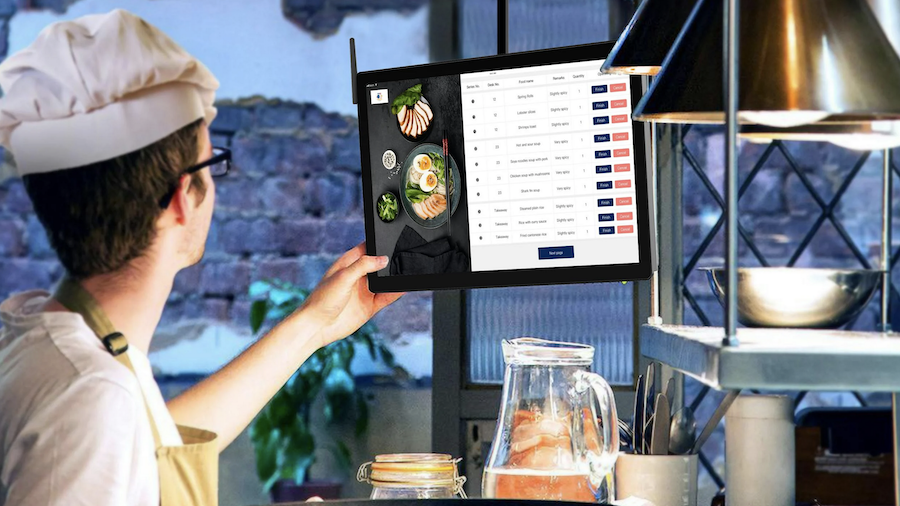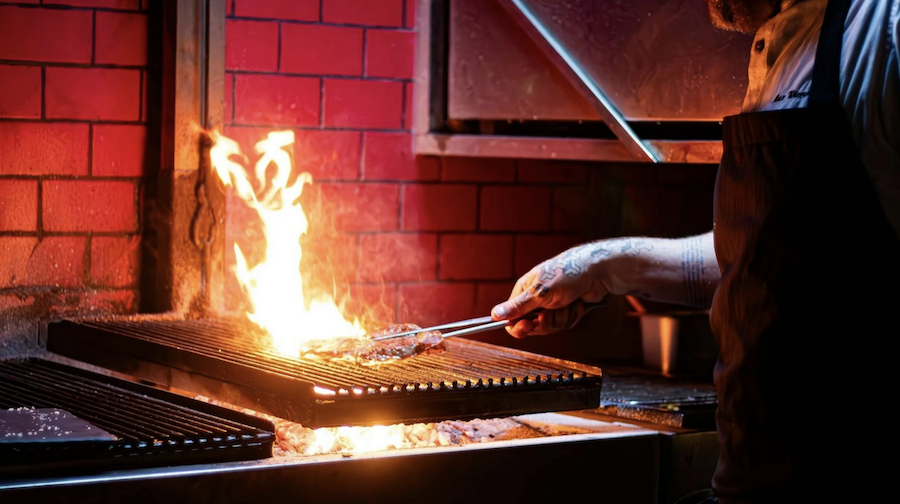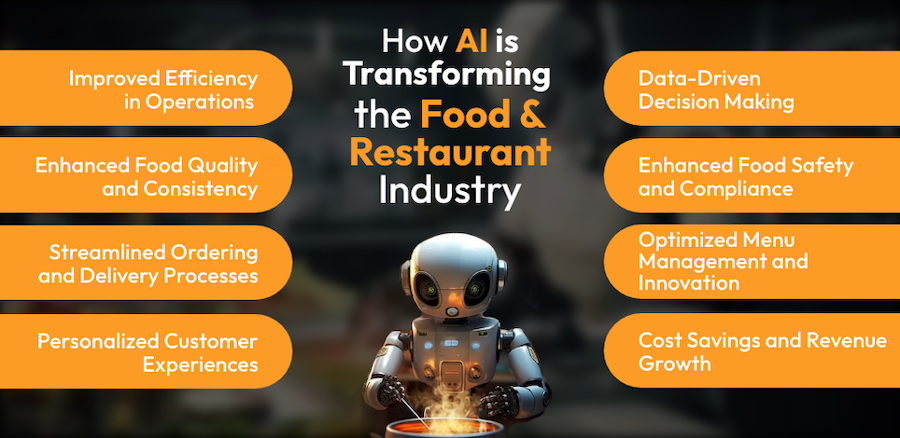Restaurant Management – How to Effectively Run a Profitable Restaurant
Good restaurant management is one of the keys to success in this industry.
Cooking and serving great food is only half the job.
The real challenge is turning your restaurant into a profitable business.
Already, the average profit margin in the restaurant industry is between 3% and 5%.
That means for every $100 in sales, you might only pocket $3 to $5.
Rising food prices and fierce competition make it even harder to hit those numbers.
Yet some restaurant owners manage to thrive.
They follow the right restaurant management strategies to control costs, streamline operations, and keep customers coming back.
This article will show you how to apply those same strategies to your own restaurant, so you can boost profits and build a business that lasts.
7 restaurant management strategies for higher profits
As a restaurant owner or manager, every decision you take can either boost your profits or slowly chip away at them.
The key is to make intentional choices that align with your long-term growth goals and commit to them with consistency.
Strategy #1: Know your customers and competitors
Strategy #2: Optimize your kitchen and inventory for maximum profit
Strategy #3: Take control of costs to boost profits
Strategy #4: Use smart tech to streamline operations
Strategy #5: Design a menu that drives orders and margins
Strategy #6: Price your menu for profit without losing customers
Strategy #7: Build a brand that brings customers back
Strategy #1: Know your customers and competitors
The most profitable restaurants know two things better than anyone else: who they’re serving and who they’re competing against.
You have to do the same. Start by identifying your customers.
Are they families looking for affordable comfort food, young professionals seeking quick lunches, or foodies chasing unique flavours?
Your menu, pricing, and promotions should be built around them.
Tip #1: Track What Sells and Why
Dive into your POS and reservation data to see which items deliver the highest margins and strongest demand. Pair that with customer surveys and feedback to understand what draws people in and what keeps them coming back.
Then, study your competitors. Visit their locations, review their menus, check their online reviews, and look for gaps you can fill.
Aim to be the only restaurant offering a certain experience, or the one that does it noticeably better.
Remember, the better you understand your market and sell your uniqueness, the more your business will thrive.
Strategy #2: Optimize your kitchen and inventory for maximum profit
Running a profitable restaurant requires thinking beyond the dining room and focusing on behind-the-scenes (i.e, the kitchen and inventory).
A well-run kitchen doesn’t just produce great food; it protects margins, minimizes waste, and ensures consistency.
Every plate should hit the same high standard while cutting down on ingredient waste.
Then, use sales data to forecast demand so you order exactly what’s needed, no more, no less.
This keeps spoilage and unnecessary costs at bay.
Tip #2: Smart Stock Rotation
Always tuck newer stock behind older items to use ingredients in the right order. This keeps everything fresh, slashes waste, and protects your margins.
One tip to manage the inventory better is to follow the FIFO (First In, First Out) principle. It suggests using older stock first to keep ingredients fresh, reduce waste, and maintain quality.
Strategy #3: Take control of costs to boost profits
The restaurants that thrive don’t leave profits to chance; they keep a tight grip on their biggest expenses: food and labour.
Together, these make up your prime cost, and staying under 60% is key to healthy margins.
Begin with food sourcing. Don’t simply accept any quotation your vendor provides.
Take time to compare suppliers, explore bulk purchasing options, and negotiate with vendors for better pricing.
You can also design seasonal menus to make the most of what’s affordable and readily available.
Labor costs also demand equal attention.
To reduce labor costs, focus on smart scheduling so you’re never overstaffed during slow hours.
Cross-train your staff so they can adapt to different roles during peak hours. As they say,
“5 dependable employees beat 10 mediocre ones any day.”
Strategy #4: Use smart tech to streamline operations
Almost every successful restaurant is ditching traditional service. Smart tech isn’t optional; it’s how you stay competitive.
Steak ’n Shake rolled out facial recognition kiosks in 300 U.S. locations.
Customers pay in seconds, and staff save hours every day. Poppy’s Pizza & Grill uses AI to handle thousands of calls, freeing employees to focus on in-person service that actually matters.
Self-serve ordering is also booming. It has two main benefits: guests can order faster, and you don’t need a huge team, saving on salaries.
If you’re not using these tools and strategies yet, you’re leaving money and time on the table.
Take a look at what other restaurants in your area are doing, test new technologies in small ways, and start optimizing your operations today.
The sooner you adapt, the faster you can boost revenue and keep customers coming back.
Strategy #5: Design a menu that drives orders and margins
Your restaurant menu is more than a list of dishes. It is the first thing that lures the customers in and sets the tone for their entire experience.
Think of your menu like a map for your customers.
Group dishes into categories, such as chef’s recommendations, best-sellers, or seasonal specialties.
Highlight high-margin items with enticing descriptions that spark the appetite and encourage customers to order.
Limited-time offers are another clever trick. It allows you to clear excess inventory or test new dishes before adding them to the menu.
Don’t forget to track how your customers respond to these menu changes.
Monitor sales data, customer feedback, and social media mentions to see which item is the most popular.
Then tweak, swap, or remove underperforming dishes to allow space for the hot-selling items.
Strategy #6: Price your menu for profit without losing customers
Smart price adjustments don’t make your customers run away.
When done right, it actually helps maintain your target food cost percentage, ideally between 28%-35%, while keeping customers happy.
Take a close look at your menu and divide it into four categories:
- Plow Horse: Low profit, High Popularity.
- Dog: Low Profit, Low Popularity.
- Puzzle: High Profit, Low Popularity.
- Star: High Profit, High Popularity.
Once you know where each dish stands, make targeted adjustments. Adjust portion sizes, revamp recipes, improve descriptions, and move high-margin dishes to the “Golden Triangle”.
Strategy #7: Build a brand that brings customers back
Restaurant branding and marketing are the soul of any business. Think about it.
Nearly 90% of people check reviews and ratings before visiting a restaurant.
If your online presence isn’t strong, you’re losing customers before they even step inside.
Your Google Business Profile is the first place to make a strong impression.
Keep it updated with accurate hours, location, and contact details. Add some palatable pictures of your signature dishes to build customer expectations.
Tip #3: Learn from the Pros
Look at Chipotle for inspiration. They collaborate with TikTok and Instagram influencers, featuring Chipotle naturally in popular “What I Eat in a Day” vlogs. Moreover, they also upload fun reels featuring their staff and customers. Strategic marketing like this builds emotional connections that drive repeat business.
Use social media to show customers behind-the-scenes of your kitchen or the journey of sourcing fresh ingredients. This builds authenticity and makes your customers feel more connected.
Master restaurant management for long-term success
Forget chasing trends or focusing solely on décor, these won’t make your restaurant thrive.
True, lasting success and higher profit margins come from targeted actions that put customers first and optimize restaurant management strategically.
If you want a restaurant that nearly runs itself, BLOC can help.
Our advertising doesn’t just increase visibility; it reaches the right customers.
With powerful location-based targeting, we bring diners to your doorstep and keep them coming back for more.










